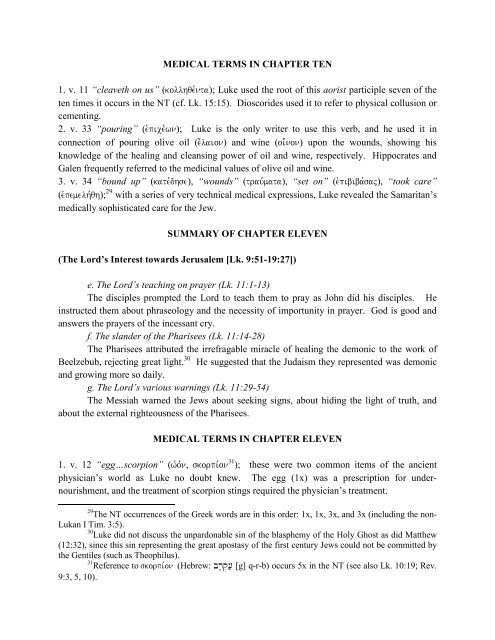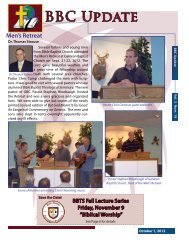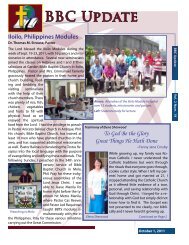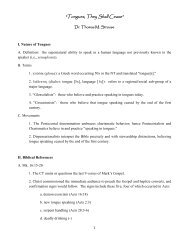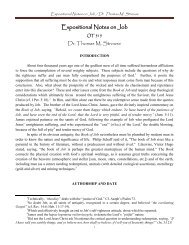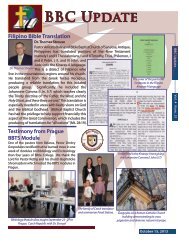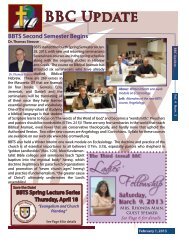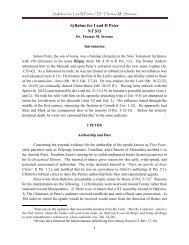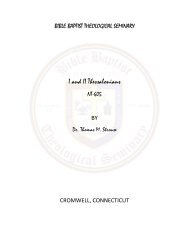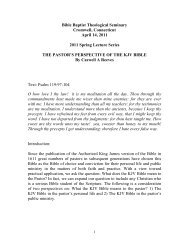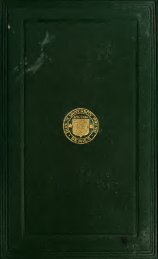Commentary on Luke's Gospel with Emphasis on Medical Terms
Commentary on Luke's Gospel with Emphasis on Medical Terms
Commentary on Luke's Gospel with Emphasis on Medical Terms
You also want an ePaper? Increase the reach of your titles
YUMPU automatically turns print PDFs into web optimized ePapers that Google loves.
MEDICAL TERMS IN CHAPTER TEN<br />
1. v. 11 “cleaveth <strong>on</strong> us” (kollhqe,nta); Luke used the root of this aorist participle seven of the<br />
ten times it occurs in the NT (cf. Lk. 15:15). Dioscorides used it to refer to physical collusi<strong>on</strong> or<br />
cementing.<br />
2. v. 33 “pouring” (evpice,wn); Luke is the <strong>on</strong>ly writer to use this verb, and he used it in<br />
c<strong>on</strong>necti<strong>on</strong> of pouring olive oil (e;lai<strong>on</strong>) and wine (oi=n<strong>on</strong>) up<strong>on</strong> the wounds, showing his<br />
knowledge of the healing and cleansing power of oil and wine, respectively. Hippocrates and<br />
Galen frequently referred to the medicinal values of olive oil and wine.<br />
3. v. 34 “bound up” (kate,dhse), “wounds” (trau,mata), “set <strong>on</strong>” (evpibiba,saj), “took care”<br />
(evpemelh,qh); 29 <strong>with</strong> a series of very technical medical expressi<strong>on</strong>s, Luke revealed the Samaritan’s<br />
medically sophisticated care for the Jew.<br />
SUMMARY OF CHAPTER ELEVEN<br />
(The Lord’s Interest towards Jerusalem [Lk. 9:51-19:27])<br />
e. The Lord’s teaching <strong>on</strong> prayer (Lk. 11:1-13)<br />
The disciples prompted the Lord to teach them to pray as John did his disciples. He<br />
instructed them about phraseology and the necessity of importunity in prayer. God is good and<br />
answers the prayers of the incessant cry.<br />
f. The slander of the Pharisees (Lk. 11:14-28)<br />
The Pharisees attributed the irrefragable miracle of healing the dem<strong>on</strong>ic to the work of<br />
Beelzebub, rejecting great light. 30 He suggested that the Judaism they represented was dem<strong>on</strong>ic<br />
and growing more so daily.<br />
g. The Lord’s various warnings (Lk. 11:29-54)<br />
The Messiah warned the Jews about seeking signs, about hiding the light of truth, and<br />
about the external righteousness of the Pharisees.<br />
MEDICAL TERMS IN CHAPTER ELEVEN<br />
1. v. 12 “egg…scorpi<strong>on</strong>” (wvo,n, skorpi,<strong>on</strong> 31 ); these were two comm<strong>on</strong> items of the ancient<br />
physician’s world as Luke no doubt knew. The egg (1x) was a prescripti<strong>on</strong> for undernourishment,<br />
and the treatment of scorpi<strong>on</strong> stings required the physician’s treatment.<br />
29 The NT occurrences of the Greek words are in this order: 1x, 1x, 3x, and 3x (including the n<strong>on</strong>-<br />
Lukan I Tim. 3:5).<br />
30 Luke did not discuss the unpard<strong>on</strong>able sin of the blasphemy of the Holy Ghost as did Matthew<br />
(12:32), since this sin representing the great apostasy of the first century Jews could not be committed by<br />
the Gentiles (such as Theophilus).<br />
31 Reference to skorpi,<strong>on</strong> (Hebrew: br'q.[; [g] q-r-b) occurs 5x in the NT (see also Lk. 10:19; Rev.<br />
9:3, 5, 10).


